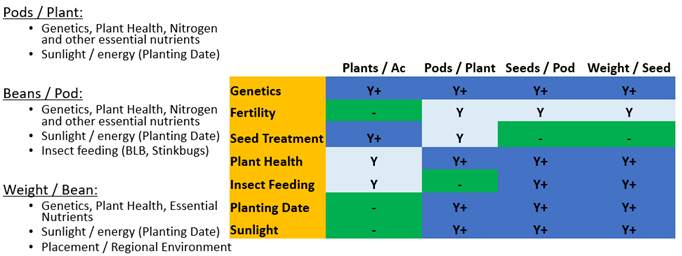Yield is a fixed number that soybean growers use to validate how well a particular variety performed or how well a treatment protected yield. As it relates to biology, however, yield is the result of how well the plant converted sunlight into stored energy (the bean). Decisions all season long will set the stage for potential yield. However, it’s the soybean growth stages R5 and R6 that put the yield in the BEAN!
Growth stages R1 and R2 are about establishing blooms. R3 and R4 are about developing the pods, but it’s R5and R6 that fill the pods to create yield. It is the role of a plant to bring in nutrients, H2O, sunlight and CO2. Through photosynthesis, the soybean plant creates energy to grow and develop pods, beans and the beans’ weight. Therefore, quality photosynthesis is linked to overall yield and performance.
One tactic farmers across the state have used is spraying a fungicide during R3 and R4. This practice helps keep a soybean plant cleaner and healthier as it goes through R5 and R6, and this investment can preserve a higher percentage of the yield potential the plant originally established. If we think about all the cells that make up a leaf, it’s all these active cells that build and produce energy. Once a plant starts to reduce quality leaf area due to disease or insect feeding, the total amount of energy that’s produced is reduced and a plant must compensate (aborted seeds, aborted pods, small bean sizes and, ultimately, lower yield).
During the R5 and R6 growth stages, it’s important to be scouting fields to better understand how a given variety has reacted so far and what decisions could have improved it or what decisions have minimized the seasonal impact. The chart below can help growers evaluate their management systems and determine areas that need to be improved. At the end of the day, a high-yielding soybean plant is the result of decisions made well before planting, complemented by seasonal decision making to offset environmental swings. All of these decisions ultimately lead up to how well can a soybean plant handles itself during R5 and R6.





 and then
and then